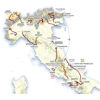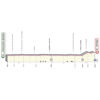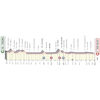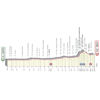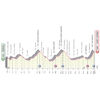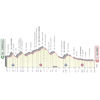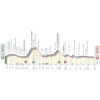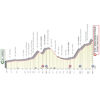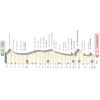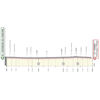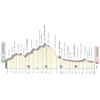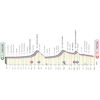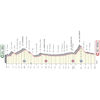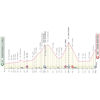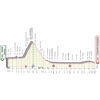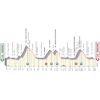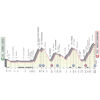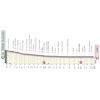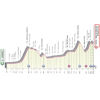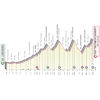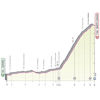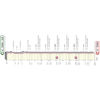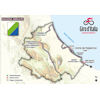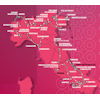Time trialists are treated with more than 70 kilometres of racing against the clock. The first ITT kilometres are scheduled on the first day of action, as stage 1 is an ITT of 19.6 kilometres long. Running along the Adriatic coast, the route is flat until the finale holds a 1.2 kilometres climb at 5.3% up its sleeve.
The 2nd stage looks promising for pure sprinters, while stage 3 serves an interesting pre-finale on Mount Vulture before a punchy finish in Melfi.
Climbers should step up in stage 4, as the Colle Molella – 8.5 kilometres at 7% – is the final climb before a 4 kilometres run-in to the line. It’s back to the fast men on stage 5 and probably also stage 6, which finishes in Naples.
The Giro re-enters Abruzzo on the seventh day of action for the first proper mountain top finish. Stage 7 travels to the high altitude plateau Campo Imperatore at the Gran Sasso, and the last 50 kilometres go virtually all uphill. Punchers are likely to have it their way on stage 8 before the second ITT rounds out the first day. Stage 9 is a little over 30 kilometres long, and flat.
Week 2
The second week opens enticing for fast finishers with finales in Viareggio and Tortona. Although the riders start from the gun in stage 10, the sprinters have 100 kilometres to make it back to the peloton afterwards. The 11th stage is even more welcoming for fast men, as the climbs are much easier before the last 45 kilometres are flat.
Stage 12 looks promising for a successful breakaway. The verical gain is similar to the previous day, but the Colle Braida – 10.8 kilometres at 5.9% – is likely to lessen the ambitions of the fast men to go for the win. An outing into Switzerland is also on the cards, as stage 13 finishes in ski resort Crans-Montana after two huge intermediate climbs. Stage 14 also features a big climb, the Simplon Pass, but as it appears early on the expected outcome is a sprint finish.
That Sunday will be something else entirely with the Giro’s take on Il Lombardia. The finale of stage 15 takes in the partly cobbled Colle Aperto – 1.6 kilometres at 7.9% – before a downhill finish in Bergamo.
Week 3
As always, the high mountains loom large in the final week of the Giro. Stage 16 sets the tone with an elevation gain of more than 5,500 metres and a summit finish on Monte Bondone. This is a 20 kilometres ascent that was included in 2020 as well, although it didn’t serve as a finish back then. Stage 17 is supposed to see a sprint finish in the streets of Caorle before we’ll witness three more days of hardship in the Alps.
Stage 18 kicks into gear in Oderzo and finishes on a punchy climb in Val di Zoldo after traversing La Crosetta, Pieve d’Alpago, Pieve di Cadore, Passo Cibiana and a steep climb to Coi. Stage 19 then kicks it up a notch with the inclusion of the Passo Valparola, Passo Giau and Passo Tre Croci as intermediate climbs before a summit finish on Tre Cime di Lavaredo. This ascent – with its last 4 kilometres solely double digit material – returns ten years after Vincenzo Nibali won there in the fog.
That Saturday we’ll see a big ITT showdown. Stage 20 is an ITT with a lot of vertical metres. After a flat run-in of 11.3 kilometres the riders enter Monte Lussari to finish at the beautiful sanctuary on the top after 7.3 kilometres of hardship at 12.3%.
The Grande Arrivo of the 2023 Giro is in Roma. The GC will be done and dusted, but stage 21 is a final chance for the sprinters who were brave enough to conquer a vertical gain of more than 51 kilometres during three weeks.
Giro d’Italia 2023: route, profiles, more
Click on the images to zoom
